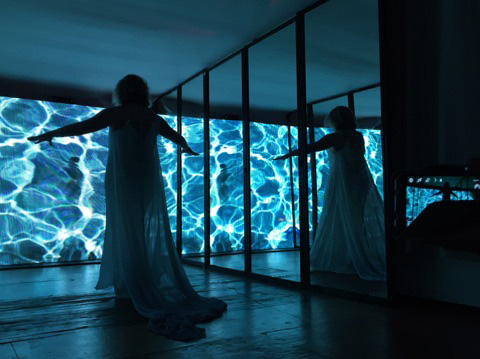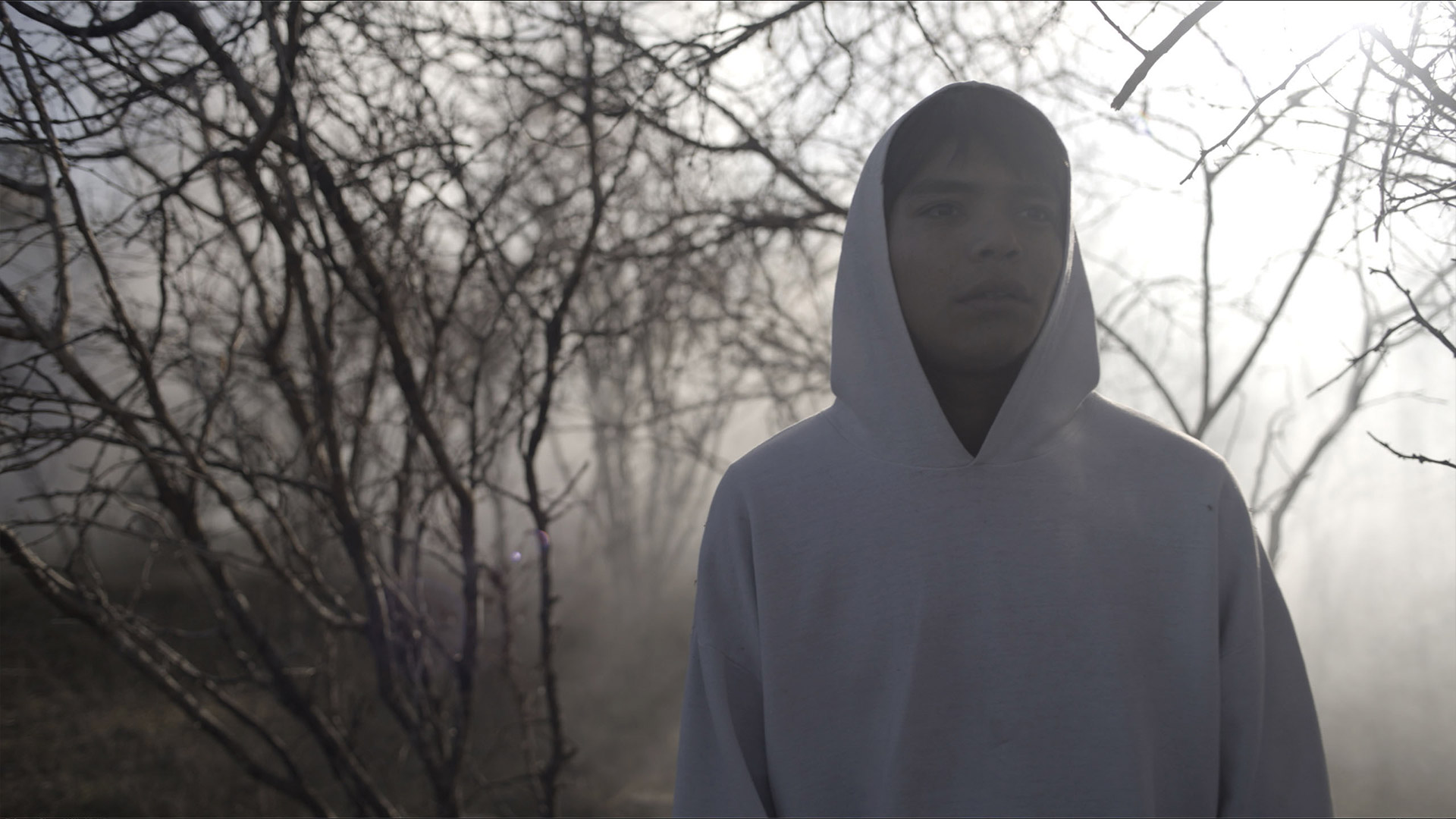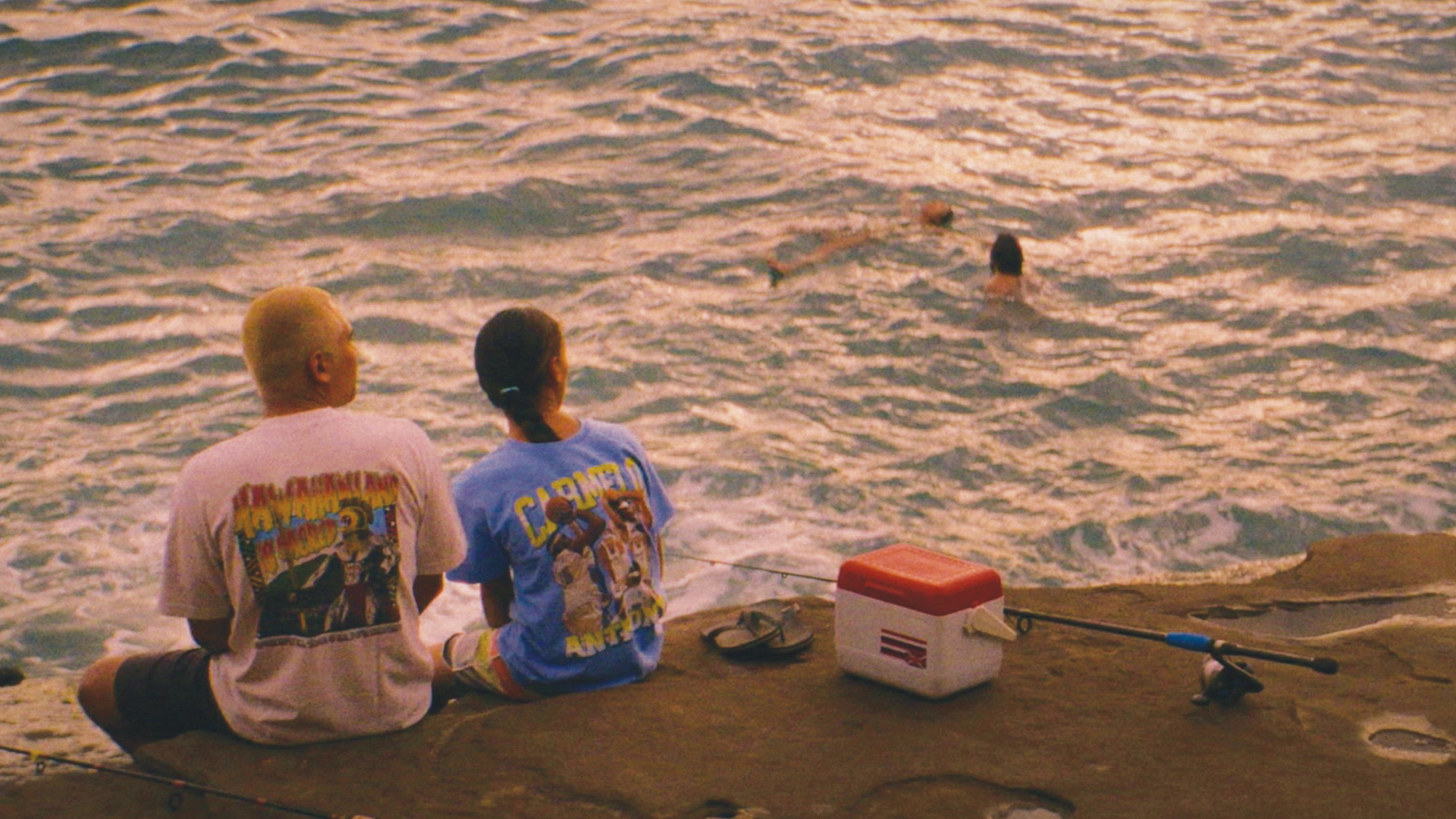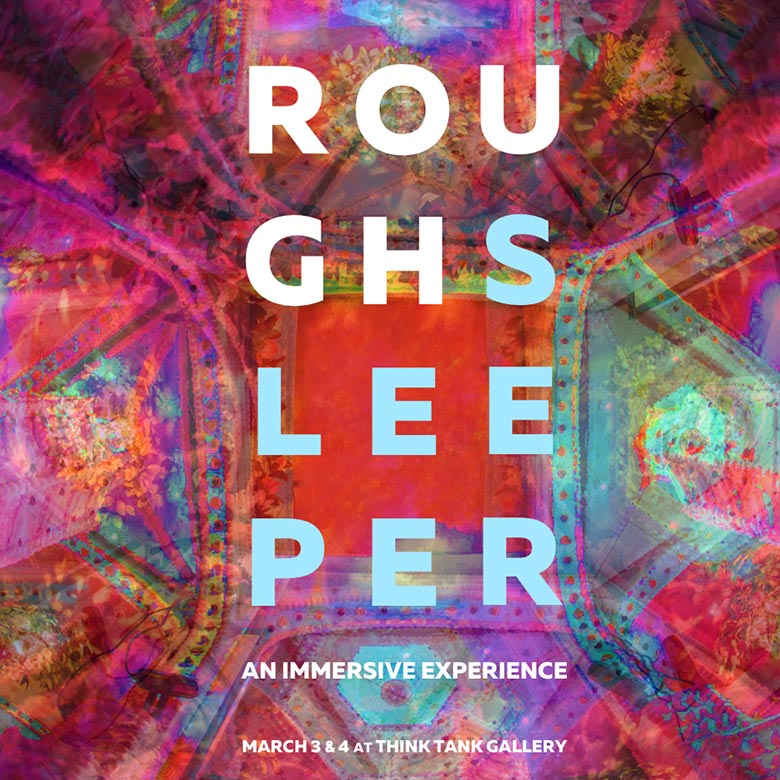 Photography by Claire Finucane
Photography by Claire Finucane
 We are said to dream on any given night, even if we fail to remember its contents. For the inaugural performances of Arya Davachi’s immersive theatre piece, Rough Sleeper, a woman polls us before we enter the venue. Did we sleep well last night? Did we dream? Do we remember our first dream ever?
We are said to dream on any given night, even if we fail to remember its contents. For the inaugural performances of Arya Davachi’s immersive theatre piece, Rough Sleeper, a woman polls us before we enter the venue. Did we sleep well last night? Did we dream? Do we remember our first dream ever?
These simple inquiries are enough to spark deep curiosity – but they also serve to set the stage for what, inside the venue, will become a mock sociological and psychological study of a “rough sleeper” – a fictional human subject whose dreams are manifest into reality through a series of rooms, and the moods, attitudes, and circumstances displayed within them.
Upon entry, we visitors find ourselves in a waiting room. A man rests upon a bed, bathed romantically in pink neons – but at first, he seems to be a rather insignificant prop. A female “psychiatrist”, played by Bianca Rusu, briskly intercepts us and encourages us to roam freely throughout the premises or come to her with questions. At this, we become self-selecting and immediately disperse, somewhat equally, between the four possible rooms.
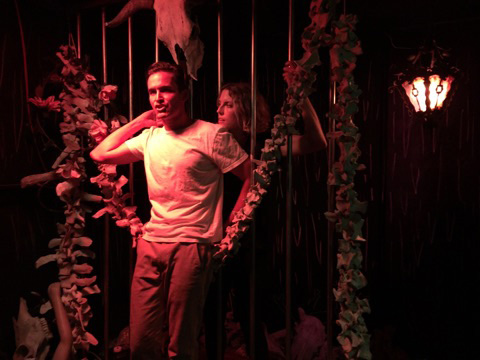 It is quite instantaneously that one begins to understand why Davachi’s piece is called Rough Sleeper, as opposed to Deep Sleeper, Calm Sleeper, or any other number of other adjectives. These dreams are dark explorations of existentialism, revealing tortured egos, mindless trapped states, and slow, depressed introspection. They encourage observers to fixate their chaos. One room is near Shakespearean in presenting the repeat inquiry, “Who are you?” as actors Dan Fleming and Diana Irvine dance around one another in a red-hued room of animal bones and iron-barred cages. Their infinite dance, which repeats on loop in short intervals, is reminiscent of the rings of hell; one almost begins to wonder whether or not all seven sins will be explored during the course of the piece. But there isn’t enough room, and definitely not even enough time. In this rendition of Rough Sleeper — which Davachi promises will be expanded upon further in the future — one is lucky to even see one whole cycle of the performances. Become transfixed by one particular room for more than a couple cycles, and you have managed to squander the possibility of seeing the remaining ones in their fullness, as I did.
It is quite instantaneously that one begins to understand why Davachi’s piece is called Rough Sleeper, as opposed to Deep Sleeper, Calm Sleeper, or any other number of other adjectives. These dreams are dark explorations of existentialism, revealing tortured egos, mindless trapped states, and slow, depressed introspection. They encourage observers to fixate their chaos. One room is near Shakespearean in presenting the repeat inquiry, “Who are you?” as actors Dan Fleming and Diana Irvine dance around one another in a red-hued room of animal bones and iron-barred cages. Their infinite dance, which repeats on loop in short intervals, is reminiscent of the rings of hell; one almost begins to wonder whether or not all seven sins will be explored during the course of the piece. But there isn’t enough room, and definitely not even enough time. In this rendition of Rough Sleeper — which Davachi promises will be expanded upon further in the future — one is lucky to even see one whole cycle of the performances. Become transfixed by one particular room for more than a couple cycles, and you have managed to squander the possibility of seeing the remaining ones in their fullness, as I did.
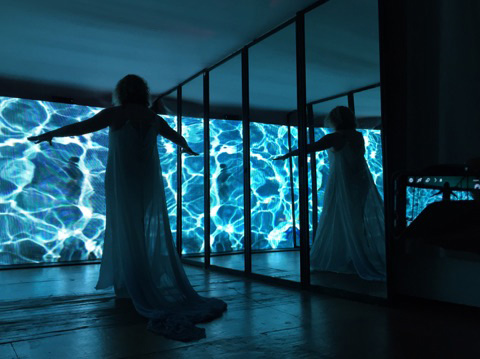 The lack of time is perhaps the significant detracting factor from Rough Sleeper, though it is one that the show’s directors are likely aware of. The psychologist later polls the audience again, this time asking whether we wish to spend more time in the dreams of the subject, and whether we feel we understand who he is. Had the chance been offered, the durational aspect of each room would absolutely have heightened the experience; every cycle differed according to the ensemble’s whims and their interactions with the audience. And like the endless procession through Dante’s inferno, the cycling nature of the performances only exemplifies the ways in which the rough sleeper is indeed tortured.
The lack of time is perhaps the significant detracting factor from Rough Sleeper, though it is one that the show’s directors are likely aware of. The psychologist later polls the audience again, this time asking whether we wish to spend more time in the dreams of the subject, and whether we feel we understand who he is. Had the chance been offered, the durational aspect of each room would absolutely have heightened the experience; every cycle differed according to the ensemble’s whims and their interactions with the audience. And like the endless procession through Dante’s inferno, the cycling nature of the performances only exemplifies the ways in which the rough sleeper is indeed tortured.
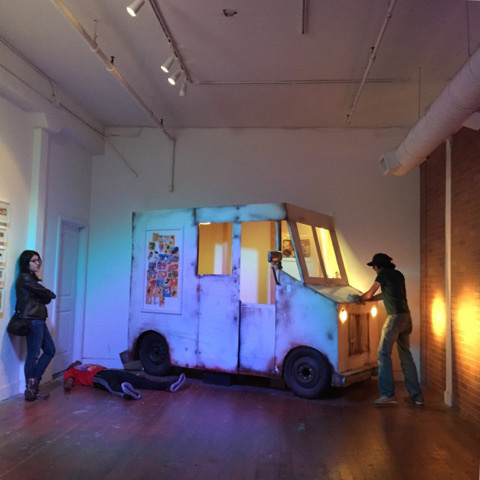 The debut of Rough Sleeper hovered around the midway point in thirty days of programming at Think Tank Gallery, as a part of Break Bread, a larger installation by artists Scott Hove and Baker’s Son. A number of individuals and groups, like Davachi, were invited to create experiences within the walls of the build-out, and thus, Rough Sleeper was incredibly site-specific. The props utilized — the bed, the cages, a blown-out ice cream truck, and a large LED panel featuring alternating views of blue rippling water and red fire — were all part of the original exhibit.
The debut of Rough Sleeper hovered around the midway point in thirty days of programming at Think Tank Gallery, as a part of Break Bread, a larger installation by artists Scott Hove and Baker’s Son. A number of individuals and groups, like Davachi, were invited to create experiences within the walls of the build-out, and thus, Rough Sleeper was incredibly site-specific. The props utilized — the bed, the cages, a blown-out ice cream truck, and a large LED panel featuring alternating views of blue rippling water and red fire — were all part of the original exhibit.
 The most striking installation was a miniature funhouse created by Hove, featuring a number of mirrors housing frosted cake sculptures and disco balls. Davachi uses this surreal setting to heighten the “trapped in a box” feel of Rough Sleeper — this time through a very physical and literal interpretation. A childish actress donning a backpack runs up wordlessly against her own image again and again, trapped like a fish in a barrel; helpless like a fish out of water. Yes, it seems the rough sleeper may only have nightmares. But why?
The most striking installation was a miniature funhouse created by Hove, featuring a number of mirrors housing frosted cake sculptures and disco balls. Davachi uses this surreal setting to heighten the “trapped in a box” feel of Rough Sleeper — this time through a very physical and literal interpretation. A childish actress donning a backpack runs up wordlessly against her own image again and again, trapped like a fish in a barrel; helpless like a fish out of water. Yes, it seems the rough sleeper may only have nightmares. But why?
During Rough Sleeper‘s gestation phase, Davachi spoke at length with his company about the ways in which they dream. To his surprise, he discovered that his personal tendency to dream in long, epic, and vivid form, was uncommon; many members of his company in fact had recurring dreams — and it is this type of dream and this type of dreamer that is more represented by Rough Sleeper. These limitations of space and time, though, are in fact clever. They meta-illustrate the psychology behind recurring dreams, which can serve as reminders of deep traumas not fully addressed or managed in waking life. And it is this idea that the second portion of Rough Sleeper addresses more directly, through a mock interview with the subject — the “rough sleeper” – which is conducted by the female psychiatrist.
The parallels between the word “rough” and the harshness of the dreams has already been described – but what may have been lost upon audience members, myself included, was Davachi’s larger reference point. In sociological terms, a “rough sleeper” is a small subset of the homeless population which is known to struggle with mental and substance abuse, yet choose to avoid shelters. When the psychiatrist reveals the dreamer to be an extremely exhausted African American man, played convincingly by R. Ernie Silva, a well-crafted yet uncomfortable exchange adequately grips the audience, especially when it revels in a daytime talk show moment and the subject leaves the room in a huff. Yet despite the well-scripted performance and the clever plays on words, there are some slight points of confusion. Minor references to commercialism feel unnecessary, and a bit of a disconnect emerges between the dreams presented and the subject himself.
Dreams are undoubtedly symbolic and abstractions of reality — but when the subject is questioned repeatedly about his experiences with prostitution, the narrative begins to feel muddled. Sexuality does not seem present in the dreams on display — and neither does the extreme shame or brutality which the psychiatrist alludes may be tied to it. And when the subject reveals that he often dreams fondly of his girlfriend who passed, and that he sometimes wishes to remain in his dreamstates with her, one wonders why there was not more feminine softness to the dreams, in general.
It is only after the fact that I learned of all of the six separate performances. One did in fact include his girlfriend, played by Sydney Sainté, and may have provided the bit of softness I yearned for. Unfortunately, I only managed to see three-and-a-half of the dreams given time limitations, and hence missed a bit of Davachi’s intention with the larger narrative. Nonetheless, Rough Sleeper‘s two nights at Think Tank Gallery were a thought-provoking and daring starting point. If given the proper attention and nourishment, Rough Sleeper is sure to break the cycle and psychology behind dreams repeating on unchanging loop, and each iteration will build towards a more and more mind-blowing long-term work.
Ω

